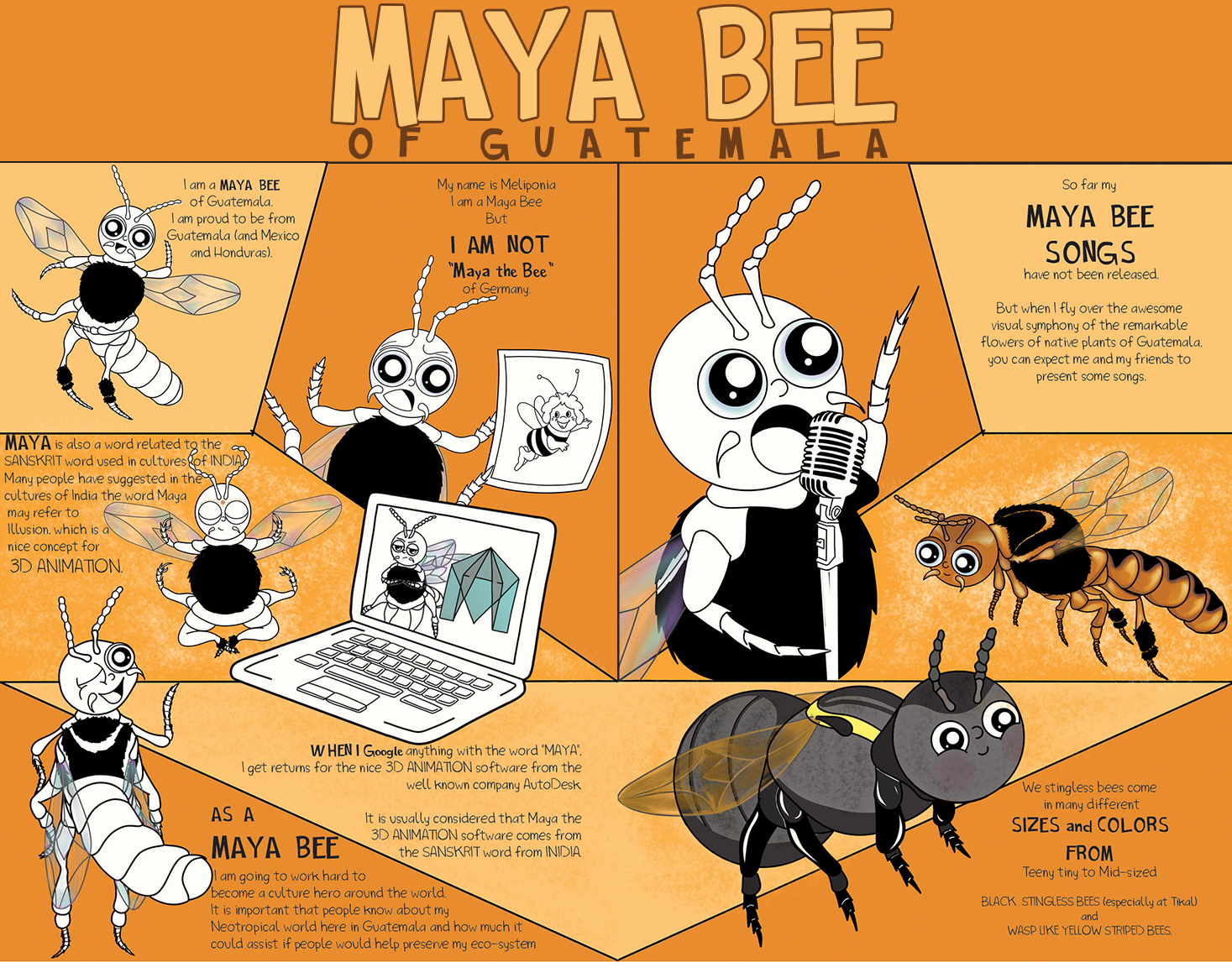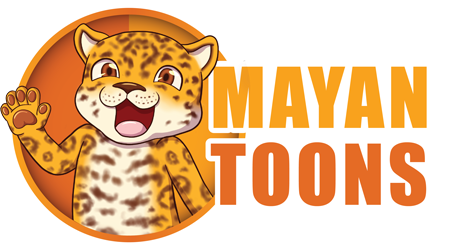Half a century ago, I spent my time with Maya archaeology. For decades I worked on iconography, cosmology, epigraphy, and learning at least basics of Mayan languages. But year by year I moved more into studying the plants and animals of the Classic Maya, especially the flora and fauna pictured in murals, carved stone stelae, and ceramics (bowls, plates, vases, figurines, incense burners, urns, etc). Year by year I spent more time on the plants and animals in part because the published documentation on utilitarian plants of the Maya is not very complete.
To do the actual animation of our cartoon characters is expensive beyond our present means (until donations can jump-start this aspect, or until partnerships with investors and/or film studios can result in significant advances). Until a helpful benefactor contacts us, we work with preparing our material on utilitarian plants and animals of several thousand years of Mayan civilization.
Goals of FLAAR (in USA) and FLAAR Mesoamerica (in Guatemala):
To protect the fragile eco-systems: the desert-like area of the Motagua River valleys; the swamps both of El Peten and of Canal de Chiquiliimulla (parallel to the Pacific Ocean); the mountains of Alta Verapaz, and other areas being destroyed by deforestation.
To protect endangered species, especially jaguars, pumas, jaguarondi, margay, ocelot, toucan, scarlet macaw, and more.
To help people understand that most spiders do not attack people (spiders help eat nasty mosquitos and other pesky bugs). So make spiders feel at home (they are safer for your health than insecticide).
To help preserve native Maya bee, most of which are stingless (the Meliponia, for example). It is ironic that Maya the Bee children’s cartoon movie dates back to the book from Germany in 1912. Our Maya bee in Guatemala is very different in size and especially in the structure and layout of the Maya bee hives.

We also raise and study native wasps (the hives around our office are all docile and the wasps never sting us, even when we photograph their hives at macro camera closeness).
Most importantly, to show values: cultural values and human ethics
Cartoons on TV decades ago show coyotes smashing road-runner birds! This violence is not good for teaching values to children.
Cartoons on TV still show all the characters smacking, hitting, the other characters. Not to mention the action comics!
I always enjoyed using TV cartoon programs to learn German language (when I lived in Switzerland for 3 years, Austria for 8 years, and Germany for 9 years). I liked Barbapapa because I could listen to the German words and learn, without being drawn into the program (since I was simultaneously doing my iconographic research for my eventual dissertation).
Nonetheless, I do not want our Mayan focused characters be at the level of the cute blobby creations of European television three decades ago (Barbapapa family), nor the TV shows for babies today (the Teletubbies blobs hopping through a stylized landscape). I prefer to orient our characters to interact with all ages: children (not babies), tweens, teens, plus their parents and grandparents.
Since Dr Nicholas Hellmuth has been an instructor at Karl-Franzens Universitaet, Graz, Austria and then Visiting Research Professor for a six month program to teach digital imaging to the staff at Japan’s National Museum of Ethnology (MINPAKU, outside Osaka). Subsequently he was Visiting Research Professor at two universities simultaneously, UFM in Guatemala and BGSU in Ohio. At each university he was the head of the digital imaging wide-format inkjet printer research staff. With this university-level experience, we at FLAAR also do a level of research and publications that can assist college and university students, plus professors and researchers (botanists, zoologists, anthropologists, archaeologists, art historians).
Dr Nicholas was also a consultant for the cultural historical department of the University of Malta (and lived in Malta during this project). Although Dr Hellmuth continues to lecture in several countries (South Africa, for example), he is currently full time at FLAAR so that he can focus on the plant and animal research which is what makes our Mayan animal cartoon comic book characters so unique.
Plus Dr Nicholas still continues his research on wide-format inkjet printing inks, printers, substrates, software, and workflow production equipment
Most recently updated January 21, 2016.
Tapir video posted December 16, 2015
